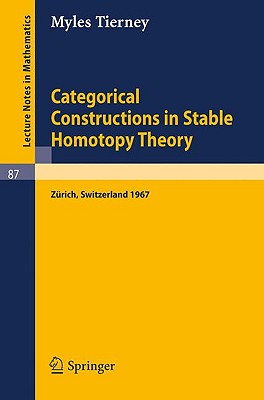Infinite Game Universe, Volume 2: Level Design, Terrain, and Sound
Guy W. Lecky-Thompson
- 出版商: Charles River Media
- 出版日期: 2002-06-30
- 售價: $2,000
- 貴賓價: 9.5 折 $1,900
- 語言: 英文
- 頁數: 428
- 裝訂: Hardcover
- ISBN: 1584502134
- ISBN-13: 9781584502135
-
相關分類:
遊戲設計 Game-design
下單後立即進貨 (約5~7天)
買這商品的人也買了...
-
 C++ Primer 題解(c++ primer answer book)
C++ Primer 題解(c++ primer answer book)$350$277 -
 編譯程式原理、技巧與工具(上冊) (Compilers: Principles, Techniques, and Tools)
編譯程式原理、技巧與工具(上冊) (Compilers: Principles, Techniques, and Tools)$380$300 -
 ASP.NET 實例導引 (ASP.NET by Example)
ASP.NET 實例導引 (ASP.NET by Example)$480$379 -
 LPI Linux 資格檢定 (LPI Linux Certification in a Nutshell)
LPI Linux 資格檢定 (LPI Linux Certification in a Nutshell)$880$695 -
 JBuilder 實用技術手冊
JBuilder 實用技術手冊$600$474 -
 Dreamweaver MX 互動網站百寶箱 for ASP
Dreamweaver MX 互動網站百寶箱 for ASP$580$493 -
 資料庫設計 ER Model 基礎講座
資料庫設計 ER Model 基礎講座$280$218 -
 STRUTS 實作手冊(Struts in Action: Building Web Applications with the Leading Java Framework)
STRUTS 實作手冊(Struts in Action: Building Web Applications with the Leading Java Framework)$690$538 -
 ColdFusion MX 與 Flash MX 網站威力實作
ColdFusion MX 與 Flash MX 網站威力實作$590$466 -
 鳥哥的 Linux 私房菜-伺服器架設篇
鳥哥的 Linux 私房菜-伺服器架設篇$750$638 -
 網路工程-最新版 CCNA (640-801、640-811、641-821)
網路工程-最新版 CCNA (640-801、640-811、641-821)$600$474 -
 發誓學會 Dreamweaver MX 2004 & PHP 資料庫網站中文版
發誓學會 Dreamweaver MX 2004 & PHP 資料庫網站中文版$620$527 -
 鳥哥的 Linux 私房菜─基礎學習篇增訂版
鳥哥的 Linux 私房菜─基礎學習篇增訂版$560$476 -
 Fedora Core 1 Linux 架站實務
Fedora Core 1 Linux 架站實務$650$553 -
 Linux 技術手冊 (Running Linux, 4/e)
Linux 技術手冊 (Running Linux, 4/e)$980$774 -
 JSP 動態網頁入門實務
JSP 動態網頁入門實務$720$569 -
 $1,280Java Security
$1,280Java Security -
 Anti-Hacker Tool Kit, 2/e
Anti-Hacker Tool Kit, 2/e$2,140$2,033 -
 TCP/IP 協定 (TCP/IP Protocol Suite, 2/e)
TCP/IP 協定 (TCP/IP Protocol Suite, 2/e)$750$713 -
 Enterprise Messaging Using JMS and IBM WebSphere
Enterprise Messaging Using JMS and IBM WebSphere$2,020$1,919 -
 網頁配色事典
網頁配色事典$420$357 -
 專案管理實務入門-引導專案成功的52條準則
專案管理實務入門-引導專案成功的52條準則$280$218 -
 人月神話:軟體專案管理之道 (20 週年紀念版)(The Mythical Man-Month: Essays on Software Engineering, Anniversary Edition, 2/e)
人月神話:軟體專案管理之道 (20 週年紀念版)(The Mythical Man-Month: Essays on Software Engineering, Anniversary Edition, 2/e)$480$379 -
 Mandrake Linux 10 火速上手
Mandrake Linux 10 火速上手$249$197 -
 JSP 2.0 技術手冊
JSP 2.0 技術手冊$750$593
相關主題
商品描述
This sequel to Infinite Game Universe:
Mathematical Techniques focuses on level design, terrain, music, and sound. The
book will provide programmers with the source code, cutting-edge techniques, and
reference materials they need to create an exciting gaming environment that will
capture the imagination of the player. Part 1 shows various techniques for
storing game level information, citing particular game types; Part 2 discusses
creation, storage and algorithms for a variety of landscapes; Part 3 provides
techniques of encoding, generating, and making new sounds for use in games.
These chapters cover a variety of sounds (from "non-human" to musical
interludes); Part 4 includes ways in which language and graphics are used in
gaming contexts; Part 5 discusses the decision-process for the target platform
(handhelds, consoles, online, etc.), and the programming-specific information
needed for each.
KEY FEATURES
- Six
chapters on sound techniques, including: Machine & Other Artificial
Sounds, The Sound of Natural Disasters, Non-Human Sounds, Human &
Humanesque Sounds, Musical Theory, Interlude and Segue Techniques
- Includes discussions of handhelds, digital imaging, artificial language, processor-limited environments, ballistic deformation, faultline shading, and more!
On the
CD-ROM
The CD-ROM
accompanying the book contains all of the applications used to generate the
images in executable form for the Microsoft's Windows platform, using a Borland
Turbo C++ compiler (see the "/binaries" directory for each chapter). The
majority of source code was written in pure ANSI C or C++ (see "/source"
directory). All of the figures contained in the book, in full color where
applicable are in the "/figures" directory.
































